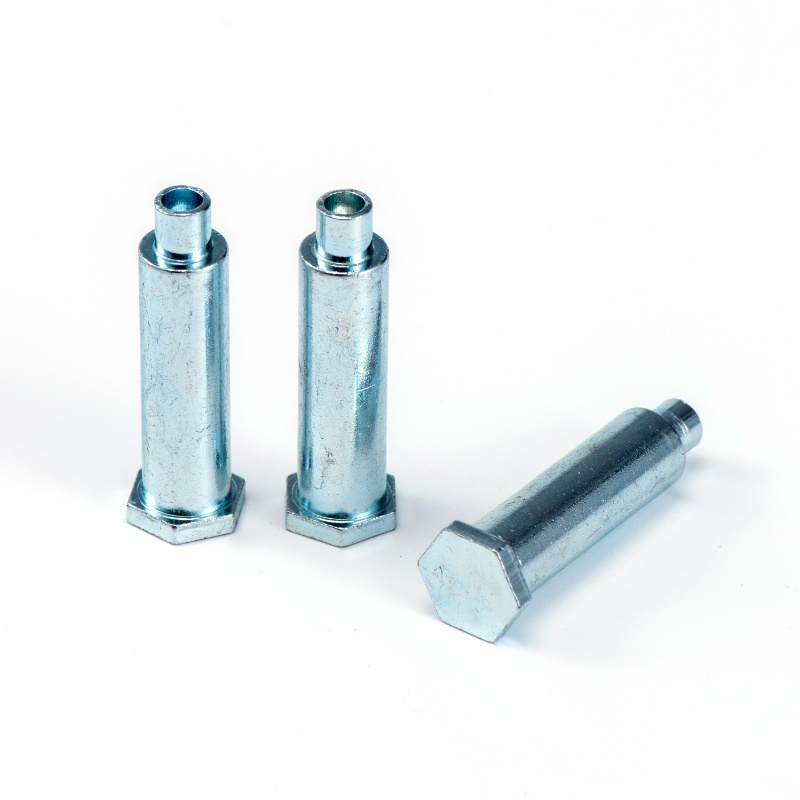Blind Rivets: Comprehensive Technical Guide
A Blind Rivet, also known as a pop rivet, is a mechanical fastener designed for joining materials where access is limited to only one side of the workpiece. Unlike solid rivets that require access to both sides for installation, Blind Rivets can be installed from one side using a specialized rivet gun. The rivet consists of two main components: a smooth cylindrical shaft (mandrel) and a head. When installed, the mandrel is pulled through the rivet body, causing the blind side to deform and create a secure joint.
Key technical characteristics of standard blind rivets:
Material options: Aluminum (most common), steel, stainless steel, copper, and Monel
Diameter range: 2.4mm (3/32") to 6.4mm (1/4") for most applications
Grip range: 0.5mm to 12.7mm (0.020" to 0.5") depending on rivet size
Shear strength: 110-1,100 kg (250-2,500 lbs) depending on material and size
Tensile strength: 180-900 kg (400-2,000 lbs) depending on material and size
Installation force: Typically requires 2,000-3,500 N (450-800 lbf) of pulling force

Technical Features and Performance Data
Modern blind rivets offer several distinct advantages over traditional fastening methods:
1. One-Side Installation Capability
The primary advantage of blind rivets is their ability to create strong joints where only one side of the workpiece is accessible. This feature makes them indispensable in applications like aircraft skins, where interior structures prevent access to the back side. Installation typically takes 2-5 seconds per rivet with proper tools.
2. Material Versatility
Blind rivets are available in various materials to match different application requirements:
Aluminum (5052, 5056): Lightweight (2.7 g/cm³ density) with good corrosion resistance
Stainless Steel (304, 316): High strength (up to 1,100 kg shear) and excellent corrosion resistance
Monel: Special alloy offering superior corrosion resistance in marine environments
Copper: Excellent electrical conductivity (58 MS/m) for electrical applications
3. Vibration Resistance
Properly installed blind rivets demonstrate exceptional vibration resistance. Testing shows they can withstand:
4. Temperature Tolerance
Specialized blind rivets can operate in extreme temperature ranges:
Standard aluminum: -40°C to +150°C (-40°F to +300°F)
High-temp variants: Up to +260°C (+500°F) continuous operation
Low-temp variants: Down to -196°C (-320°F) for cryogenic applications
Primary Application Scenarios
Aerospace Industry
Blind rivets are extensively used in aircraft assembly, particularly for skin panels and interior components. Aerospace-grade rivets typically feature:
Material: 2117-T4 aluminum or corrosion-resistant steel
Diameter: 3.2mm (1/8") to 4.8mm (3/16") for most airframe applications
Shear strength: 350-600 kg (800-1,300 lbs) per rivet
Automotive Manufacturing
Modern vehicles use blind rivets for:
Body panel assembly (aluminum rivets with 4.8mm diameter)
Chassis components (steel rivets with 6.4mm diameter)
Interior trim (small 3.2mm plastic-core rivets)
Automotive applications typically require 3,000-5,000 rivets per vehicle in modern designs.
Electronics Enclosures
Small blind rivets (2.4-3.2mm diameter) secure:
These applications often use aluminum or stainless steel rivets with break loads of 150-300 kg (330-660 lbs).
Construction and Building
Blind rivets provide structural connections in:
Steel framing (6.4mm diameter steel rivets)
Aluminum curtain walls (4.8mm diameter aluminum rivets)
HVAC ductwork (4.0mm diameter stainless rivets)
Maintenance and Care Procedures
Storage Conditions
Proper rivet storage extends shelf life and maintains performance:
Store in original packaging at 15-25°C (59-77°F)
Maintain relative humidity below 60%
Keep away from corrosive chemicals and solvents
Aluminum rivets should be stored separately from steel to prevent galvanic corrosion
Tool Maintenance
Regular maintenance of rivet installation tools ensures proper performance:
Lubricate moving parts every 5,000 cycles with light machine oil
Inspect nosepieces for wear every 10,000 cycles
Replace worn jaws when rivet pull force drops by 15%
For pneumatic tools, maintain air pressure at 6.2 bar (90 psi) ±10%
Installation Quality Control
Proper installation verification includes:
Visual inspection for complete mandrel breakage
Measurement of installed head diameter (should be 1.5x original shank diameter)
Pull testing sample rivets to 75% of rated strength
Periodic torque testing (for structural applications)
Corrosion Prevention
For harsh environments:
Apply protective coatings (zinc chromate for aluminum)
Use compatible materials to prevent galvanic corrosion
Consider sealed rivets for wet environments
Implement regular inspection schedules (every 6-12 months)





